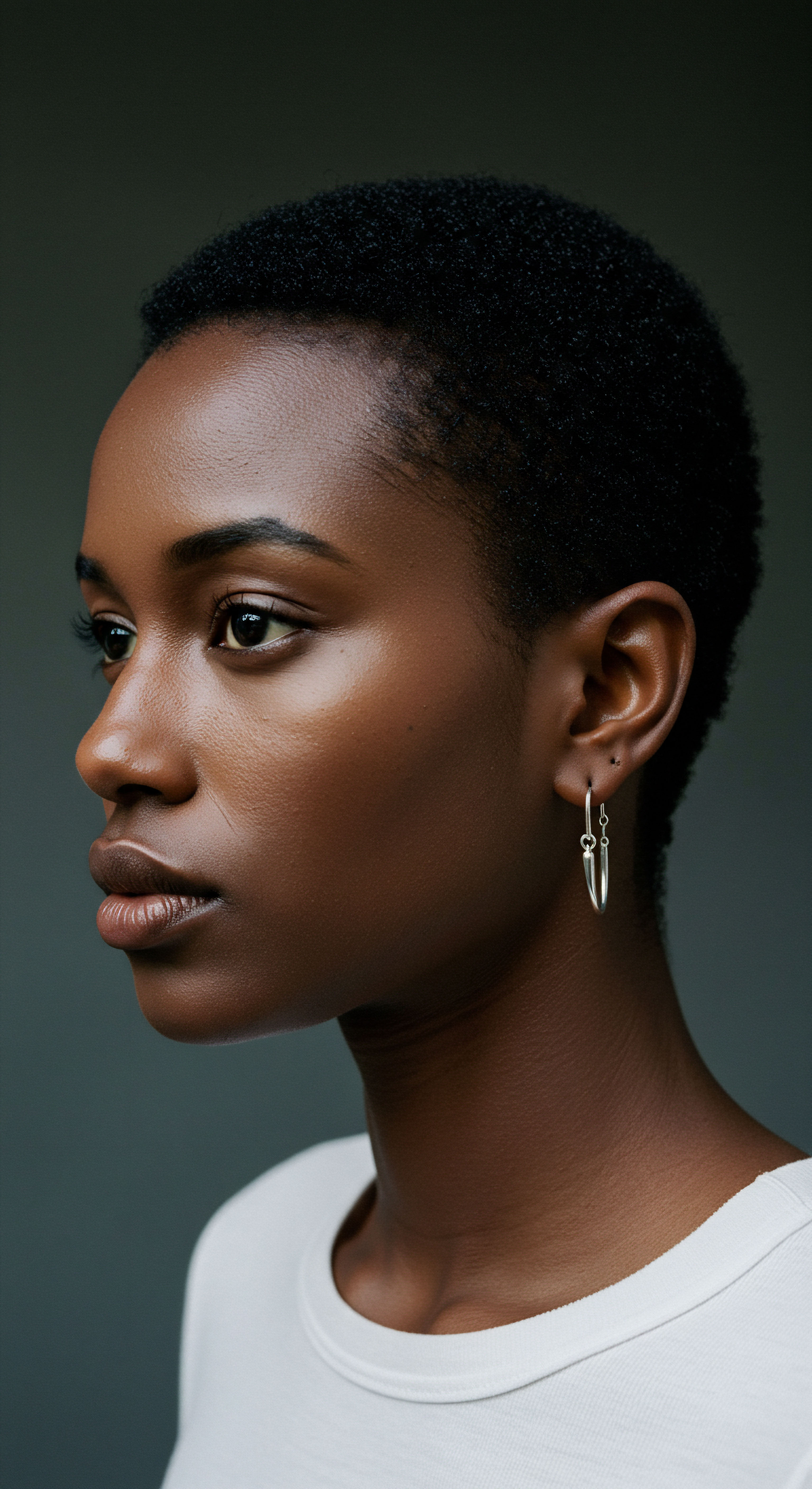
Roots
Have you ever paused to consider the quiet hours of slumber, not merely as a respite for the mind and body, but as a profound architect of your textured strands? The gentle rhythm of night holds more than dreams; it orchestrates a silent, intricate dance within each coil and curl, shaping its very resilience. At Roothea, we often ponder the unseen forces that sculpt our hair’s daily reality, and among them, the nightly restoration stands as a deeply grounding influence, deserving of our thoughtful attention. It is a time when the deepest workings of our physiology lend their hand to the visible vitality of our hair.

The Architecture of Hair at Rest
Our hair, particularly textured hair with its distinctive helical and elliptical structures, is a marvel of biological engineering. Each strand is primarily composed of Keratin Proteins, intricately linked by disulfide bonds, hydrogen bonds, and salt bonds. These bonds confer strength, elasticity, and the characteristic curl pattern.
During waking hours, our hair faces a barrage of environmental stressors—from humidity shifts to mechanical manipulation. Sleep, therefore, becomes a crucial period for the repair and maintenance of this delicate architecture.
The hair follicle, a tiny organ beneath the scalp, is the true powerhouse of hair growth. It is a highly active metabolic site, undergoing continuous cycles of growth, regression, and rest. While we sleep, the body prioritizes restorative processes. This includes heightened cellular division within the hair follicle’s matrix cells, the very cells responsible for producing new hair protein.
A sustained period of quality sleep provides the ideal conditions for these cells to operate efficiently, laying down the structural components of strong, healthy hair. The dermal papilla, a cluster of cells at the base of the hair follicle, plays a significant role in this nightly renewal. It sends signals to the matrix cells, guiding their proliferation and differentiation, which is optimized during restful periods.
The quiet hours of sleep serve as a vital period for cellular repair and protein synthesis within the hair follicle, strengthening textured strands from their very foundation.
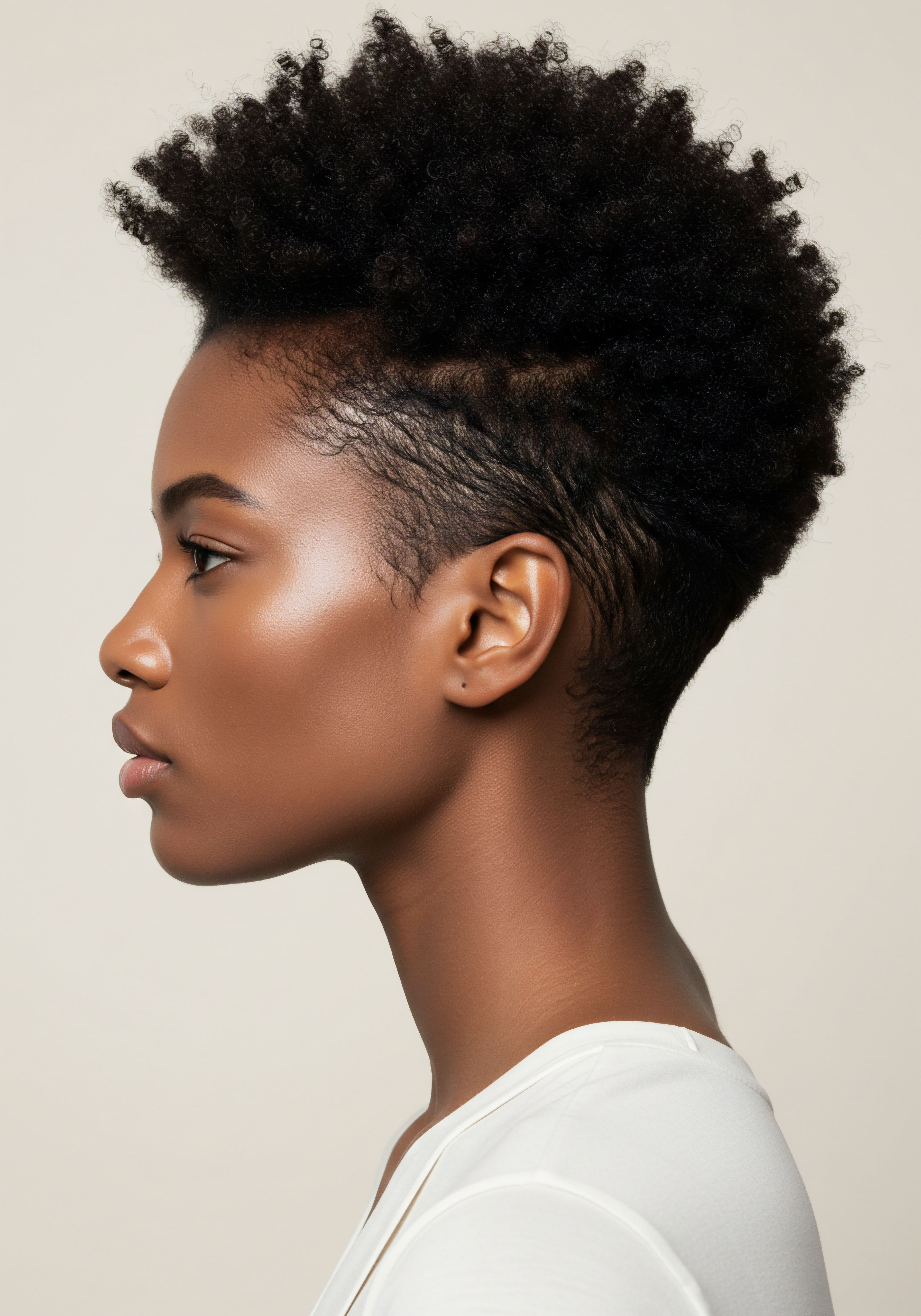
Cellular Renewal and Protein Synthesis
During deep sleep, specifically the non-rapid eye movement (NREM) stages, the body releases growth hormones. These hormones are not only essential for muscle repair and tissue regeneration across the body but also play a direct role in the anagen (growth) phase of the hair cycle. They stimulate cell reproduction and protein synthesis within the hair follicle. Without sufficient, uninterrupted sleep, the production of these growth hormones can be compromised, potentially slowing hair growth and impacting the quality of new hair that emerges.
This also extends to the synthesis of different types of keratin. Hard keratins, which form the structural core of the hair shaft, and softer keratins, found in the inner root sheath, both require optimal cellular machinery for their proper assembly.
Consider the meticulous construction of a single hair strand. It is a process demanding abundant resources and precise biological signaling. The amino acids, the building blocks of keratin, are delivered to the follicle via the bloodstream. A body well-rested and in a state of optimal repair ensures that this delivery system functions without hindrance, supplying the necessary raw materials for robust hair construction.
Any deficiency in this nightly renewal process could manifest as strands that feel weaker, appear duller, or are more prone to breakage. Furthermore, the assimilation of essential vitamins and minerals, such as biotin, zinc, and iron, which are vital cofactors in keratin synthesis, is more efficient when the body is not under the duress of sleep deprivation.

The Circadian Rhythm and Hair Health
The human body operates on a natural Circadian Rhythm, a 24-hour cycle that regulates various physiological processes, including sleep-wake cycles, hormone release, and cell regeneration. Hair follicles themselves exhibit their own circadian rhythms, with gene expression patterns that vary throughout the day and night. For instance, studies indicate that certain genes involved in hair growth and repair are more active during periods of rest. Disruptions to this internal clock, often caused by irregular sleep patterns or chronic sleep deprivation, can throw these delicate follicular rhythms out of sync.
This misalignment can lead to a less efficient repair process, making hair more vulnerable. A study published in the Journal of Investigative Dermatology explored the circadian clock genes within human hair follicles, revealing their rhythmic expression and sensitivity to external cues. While not directly focused on textured hair, the fundamental biological mechanisms apply, suggesting that consistent, restorative sleep aligns the body’s natural rhythms with the hair follicle’s optimal functioning. The integrity of the hair shaft, from its cuticle to its cortex, relies on this precise timing for optimal repair and maintenance.
- Keratin Production ❉ Sleep allows the body to dedicate energy and resources to synthesizing the complex keratin proteins that form the hair shaft, including both hard and soft keratin types.
- Follicle Repair ❉ Nighttime is when the hair follicle undergoes significant repair and regeneration, addressing micro-damage accumulated during the day and optimizing dermal papilla signaling.
- Hormonal Balance ❉ Proper sleep supports the balanced release of hormones, including growth hormone, which are vital for healthy hair growth cycles and overall cellular health.
- Nutrient Uptake ❉ The body’s metabolic processes during sleep enhance the delivery and utilization of vitamins and minerals essential for hair structure.

Microscopic Vulnerabilities of Textured Hair at Night
Textured hair, with its unique bends and twists, possesses inherent structural characteristics that make it particularly susceptible to mechanical stress. The points where the hair strand bends are often areas of reduced tensile strength. During sleep, especially for those who toss and turn, friction against pillowcases can cause microscopic abrasions on the hair’s outer layer, the Cuticle. The cuticle, composed of overlapping scales, acts as the hair’s protective armor.
When these scales are lifted or chipped away, the inner cortex becomes exposed, leading to moisture loss, increased porosity, and ultimately, breakage. This is particularly pronounced in areas of high contact, such as the nape and sides of the head.
The impact of sleep on textured hair integrity extends beyond mere friction. It also involves the scalp’s microcirculation. During sleep, blood flow to the scalp can be optimized, delivering essential nutrients and oxygen to the hair follicles.
Compromised sleep can reduce this vital delivery, potentially starving the follicles of the resources they need to construct strong, resilient strands. This reduced circulation can also hinder the removal of metabolic waste products from the scalp, creating a less than ideal environment for healthy hair growth.
| Process Growth Hormone Release |
| Impact on Hair Stimulates cellular division in follicles, supporting new hair growth and protein synthesis. |
| Process Cellular Repair |
| Impact on Hair Repairs micro-damage to hair structure and scalp cells, maintaining cuticle smoothness. |
| Process Nutrient Delivery |
| Impact on Hair Optimized blood flow ensures follicles receive vital building blocks like amino acids, vitamins, and minerals. |
| Process Circadian Alignment |
| Impact on Hair Synchronizes follicular activity for efficient repair and growth cycles, influencing gene expression. |
| Process Waste Removal |
| Impact on Hair Improved microcirculation aids in clearing metabolic byproducts from the scalp, supporting follicle health. |
| Process These interconnected nightly functions collectively contribute to the structural resilience of textured hair, influencing its strength and appearance. |

Ritual
As the day draws to a close, and the world outside softens into twilight, our textured strands seek a quiet sanctuary, a moment of respite from the elements and daily manipulation. Understanding the fundamental physiological workings of sleep on hair lays the groundwork, but how do we translate this wisdom into a tangible practice, a nightly ritual that safeguards our hair’s integrity? This is where intention meets application, where the gentle art of nighttime care truly comes into its own, transforming slumber from a potential source of stress into a powerful ally for healthy hair. It is a thoughtful preparation, a deliberate act of protection.
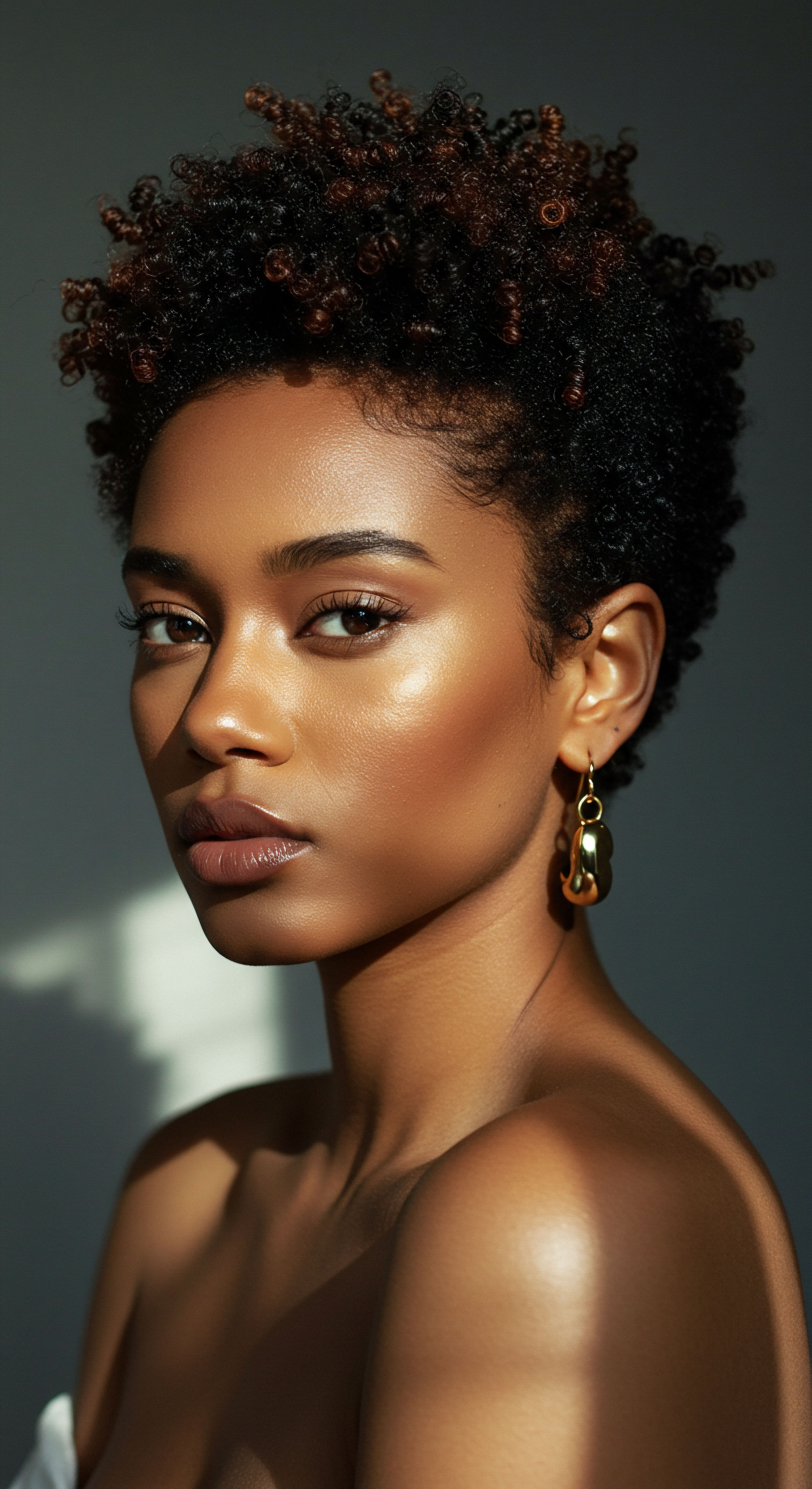
The Mechanics of Nighttime Friction
One of the most immediate and observable impacts of sleep on textured hair is the mechanical stress induced by friction. As we shift and turn during the night, our hair rubs against pillowcases. Cotton, a common pillowcase material, possesses a rough surface at a microscopic level, creating drag that can snag and pull delicate hair strands. This constant friction can lead to several detrimental effects on the hair’s structural integrity.
The outer cuticle layer, designed to protect the hair’s inner cortex, is particularly vulnerable. Repeated rubbing can lift, abrade, or even chip away these protective scales, much like rough sandpaper on a polished surface. Once the cuticle is compromised, the hair becomes more porous, losing its ability to retain moisture effectively.
This increased porosity makes hair feel dry, look dull, and become significantly more prone to breakage, particularly at the mid-shaft and ends, where hair is oldest and most fragile. This effect is often amplified in textured hair due to its already lifted cuticle structure compared to straighter hair types.

The Moisture Preservation Imperative
Textured hair is inherently prone to dryness due to its coiled structure, which makes it harder for natural scalp oils (sebum) to travel down the hair shaft. This characteristic makes moisture preservation an absolute nightly imperative. While we sleep, the body naturally loses water through respiration and perspiration. Without adequate protection, hair can lose a significant amount of its internal moisture to the surrounding air and absorbent pillowcase materials.
A hydrated hair strand is a flexible, resilient strand. When hair is dry, its elasticity diminishes, making it stiff and brittle. This lack of pliability makes it far more susceptible to breakage from even minor mechanical stress during sleep.
Therefore, nighttime care routines must prioritize sealing in moisture, creating a barrier against dehydration. The ideal environment for textured hair during sleep is one that minimizes moisture transfer away from the hair shaft and prevents the disruption of its delicate moisture balance.
Thoughtful nighttime routines, especially those involving protective coverings, significantly mitigate mechanical stress and preserve moisture within textured hair.
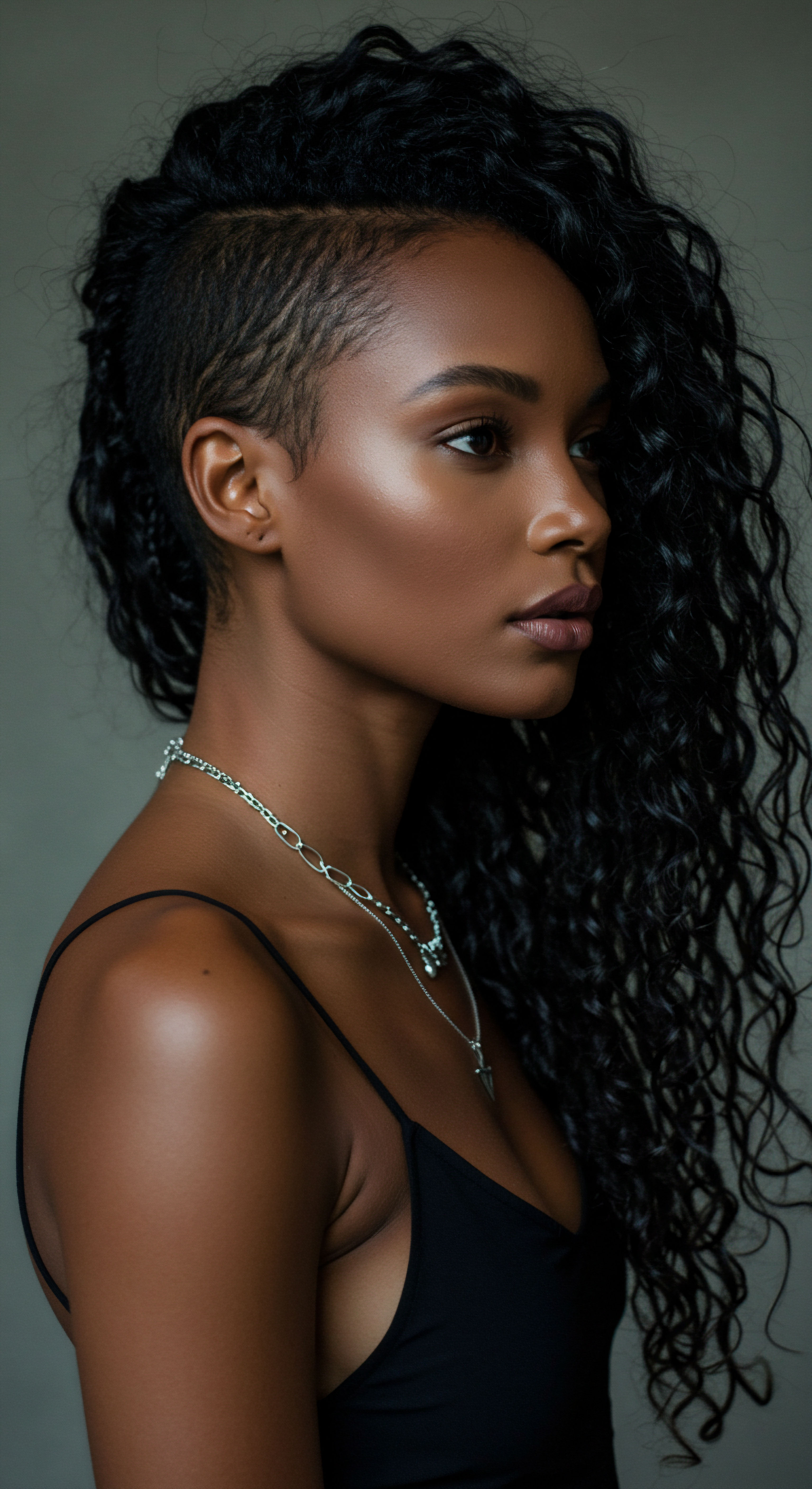
Protective Styles for Sleep
Implementing a protective style before bed is a foundational element of a nurturing nighttime ritual. These styles minimize tangling, reduce friction, and keep hair neatly contained, preventing it from rubbing against surfaces. The choice of style can also help maintain curl definition and reduce the need for excessive manipulation in the morning, further reducing potential damage.
Common protective styles include:
- Pineappling ❉ Gathering hair loosely at the very top of the head with a soft scrunchie, allowing curls to remain mostly undisturbed. This keeps the bulk of the hair off the neck and pillow, preserving volume and curl pattern, especially for looser textures.
- Loose Braids or Twists ❉ Dividing hair into two to four large, loose braids or twists. This contains the hair, reduces tangling, and helps maintain curl definition, suitable for tighter coils and curls. The looseness prevents tension on the scalp.
- Banding ❉ Using several soft elastic bands along the length of the hair to stretch curls and prevent shrinkage and tangling. This method is particularly useful for those aiming to maintain length and reduce knotting.
- Bun or Roll ❉ For longer hair, a loose bun or roll secured at the nape or crown can keep strands contained and minimize friction.
The choice of style depends on hair length, texture, and desired morning look. The key is to ensure the style is loose enough to prevent tension on the scalp and hair follicles, which could lead to traction alopecia over time. The goal is protection, not restriction. The aim is to create a secure, yet gentle, environment for the hair to rest.
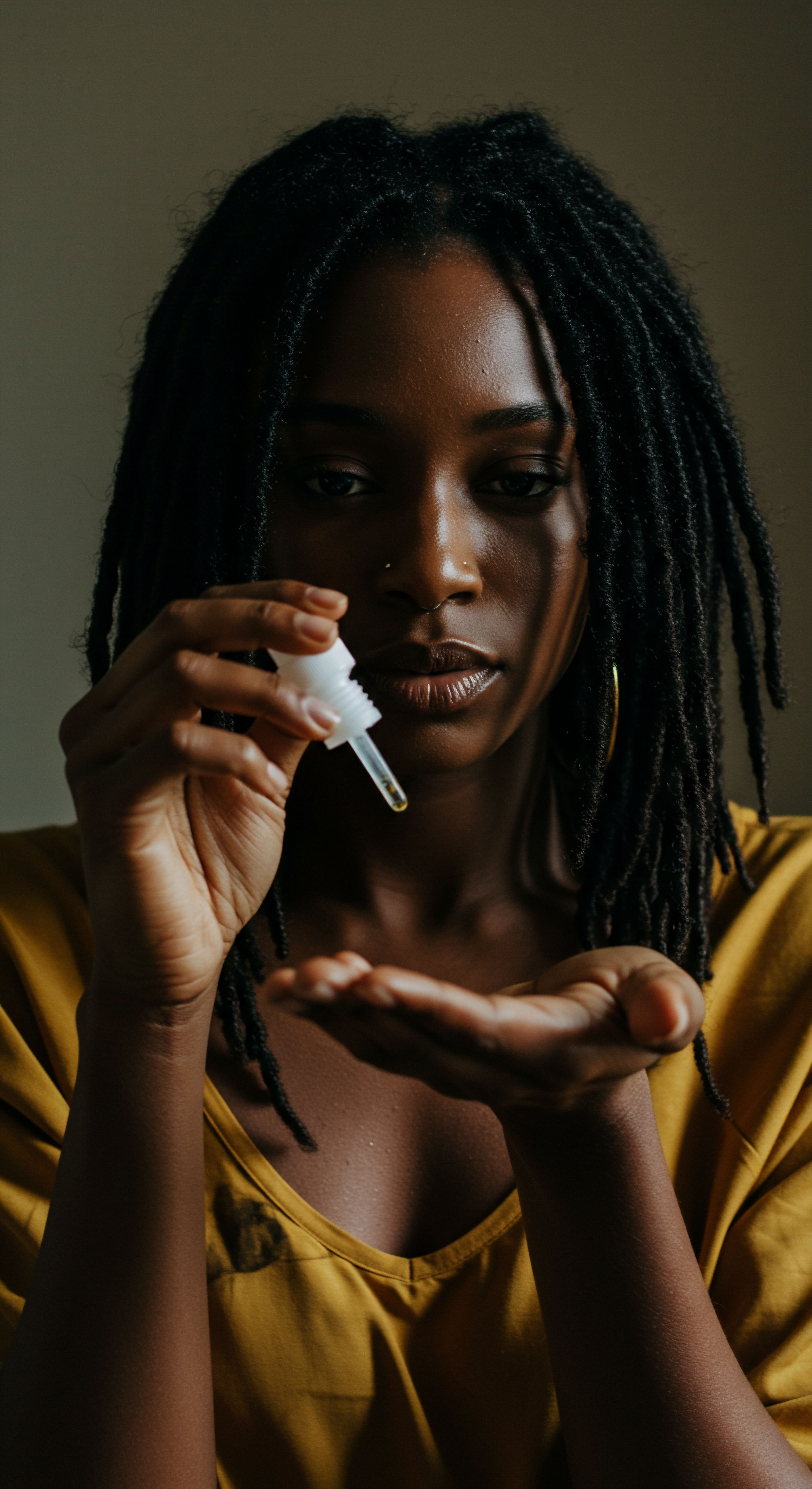
The Wisdom of Bonnets and Silk
Beyond protective styles, the material against which hair rests during sleep holds immense significance. Traditional wisdom, long held within textured hair communities, advocates for the use of silk or satin head coverings and pillowcases. This isn’t merely anecdotal; it is backed by the physical properties of these materials.
Unlike cotton, silk and satin possess a smooth, low-friction surface. When hair glides across these materials, there is significantly less resistance, drastically reducing the mechanical abrasion on the cuticle. This minimizes frizz, prevents tangles, and helps maintain the hair’s natural moisture content by not absorbing oils and hydration from the hair as readily as cotton. A comparative study, while not exclusively on textured hair, highlighted that hair breakage was significantly lower when individuals slept on silk pillowcases compared to cotton, attributing this to reduced friction.
This empirical observation validates generations of communal knowledge. Furthermore, the smooth surface of silk and satin also helps to reduce static electricity, which can contribute to frizz and cuticle damage, especially in dry environments.
| Material Cotton |
| Surface Texture Rough, fibrous |
| Moisture Absorption High |
| Impact on Hair Increases friction, absorbs moisture and natural oils, leads to frizz, tangles, and breakage. |
| Material Silk/Satin |
| Surface Texture Smooth, slick |
| Moisture Absorption Low |
| Impact on Hair Reduces friction, preserves moisture and natural oils, minimizes frizz, tangles, and breakage. |
| Material Choosing the right sleep surface significantly impacts the long-term structural health of textured hair by minimizing mechanical stress and preserving hydration. |

A Gentle Approach to Hair Prep
The ritual extends to the very products and methods used before bed. Applying a lightweight leave-in conditioner or a small amount of hair oil can create an additional protective layer, sealing in moisture and adding slip. The application should be gentle, avoiding any vigorous rubbing or pulling. The aim is to prepare the hair for a peaceful night, allowing it to rest undisturbed.
This mindful preparation, combined with the right protective accessories, transforms the act of sleeping into a powerful restorative treatment for textured hair. This pre-sleep hydration step is particularly vital for textured hair, as it acts as a barrier against the natural overnight moisture loss, keeping the strands supple and less prone to brittleness when subjected to incidental friction.
The humidity level in the sleep environment also plays a subtle role. A very dry bedroom atmosphere can draw moisture from the hair. While not always practical to control, using a humidifier, especially in arid climates or during winter months, can supplement the protective measures by maintaining a more hair-friendly ambient moisture level. The cumulative effect of these thoughtful practices ensures that sleep, rather than being a period of potential damage, becomes a cornerstone of hair resilience and vitality.
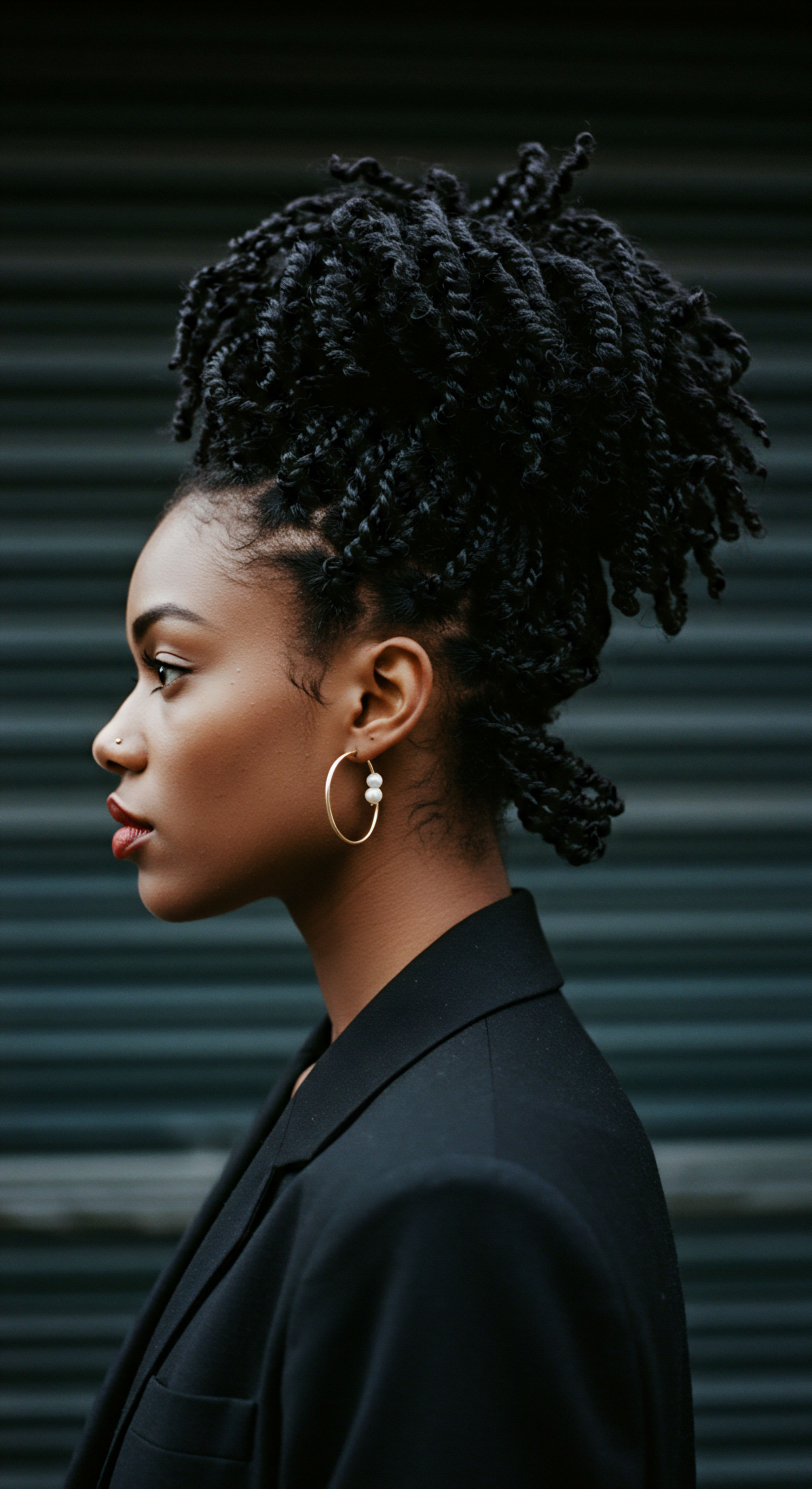
Relay
Beyond the foundational biology and the mindful rituals, how does the profound interconnectedness of our overall wellbeing, deeply influenced by sleep, ripple through to the very resilience of our textured strands? This section invites us to consider the intricate dance between systemic health, the subtle cues of our environment, and the deeply personal journey of hair vitality. It is here that we bridge the scientific with the experiential, understanding that hair is not an isolated entity but a visible barometer of our internal and external worlds.

Systemic Health and Hair Vitality
The integrity of textured hair is inextricably linked to the body’s systemic health, and sleep plays a critical role in maintaining this equilibrium. Chronic sleep deprivation, a condition affecting a significant portion of the global population, triggers a cascade of physiological responses that can directly compromise hair health. When the body is under stress due to insufficient rest, it diverts resources to essential survival functions, often at the expense of non-essential processes like hair growth and repair.
One notable consequence of prolonged sleep deficit is an elevation in Cortisol Levels, often referred to as the stress hormone. Sustained high cortisol can disrupt the hair growth cycle, potentially pushing more follicles into the telogen (resting) phase prematurely, leading to increased shedding. Furthermore, elevated cortisol can exacerbate inflammation, which can negatively impact the delicate environment of the scalp and hair follicles.
The health of the scalp is paramount for the production of strong hair, and an inflamed scalp can impede proper nutrient delivery and cellular function. The sustained inflammatory state can also compromise the integrity of the hair shaft itself, making it more susceptible to damage.

The Endocrine System and Hair
The endocrine system, a network of glands that produce and secrete hormones, is finely tuned by the body’s circadian rhythm. Sleep disturbances can throw this delicate hormonal balance into disarray. Hormones such as thyroid hormones, androgens, and estrogen all have significant roles in regulating hair growth and follicular health. For instance, imbalances in thyroid hormones can lead to brittle hair and hair loss, while fluctuations in sex hormones can influence hair thickness and growth patterns.
The body’s production of insulin-like growth factor 1 (IGF-1), a hormone crucial for cell growth and division, is also closely tied to sleep patterns. Lowered IGF-1 levels due to poor sleep can directly impair hair follicle activity and reduce the anagen phase duration.
A particularly compelling aspect of this connection is the role of Melatonin. While primarily known for its role in regulating sleep, melatonin is also produced in hair follicles and has been shown to influence hair growth. Research suggests that melatonin can extend the anagen phase of the hair cycle and possesses antioxidant properties that protect follicular cells from oxidative stress. A study published in the British Journal of Dermatology demonstrated that topical melatonin application could increase hair density in individuals with androgenetic alopecia, hinting at its systemic role.
This suggests that the body’s natural production of melatonin during restful sleep contributes to hair vitality beyond its sleep-inducing properties. The intricate feedback loops within the neuroendocrine axis mean that sleep disruptions have far-reaching consequences for hair.
The profound connection between systemic health, hormonal equilibrium, and the integrity of textured hair underscores the vital role of consistent, quality sleep.
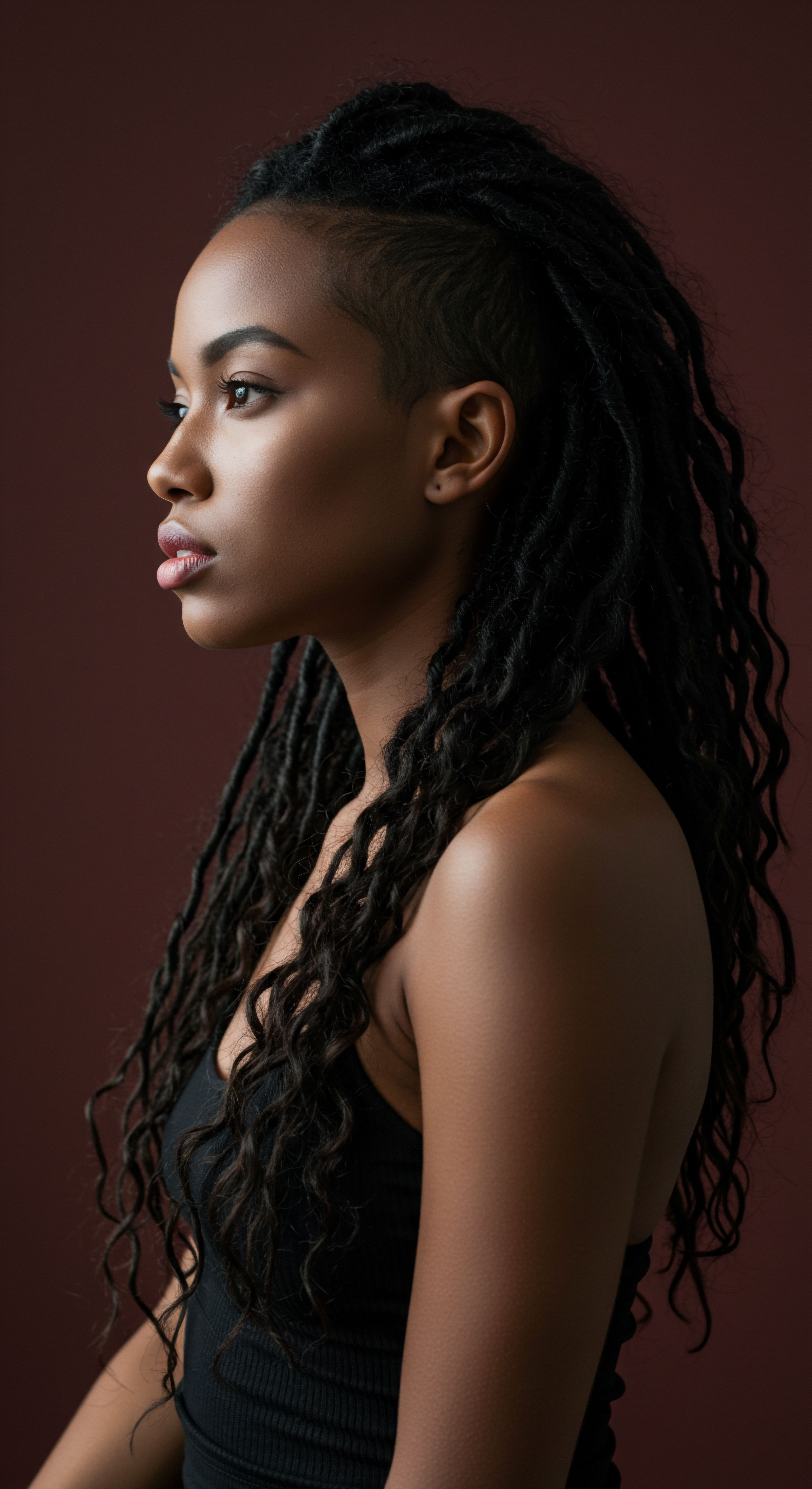
Environmental and Cultural Contexts of Sleep and Hair Care
Beyond the biological, the cultural and environmental contexts surrounding sleep significantly shape hair care practices and, by extension, hair integrity. For generations, various cultures have developed specific nighttime hair rituals, recognizing the vulnerability of hair during rest. These traditions often involve protective coverings, specific styling techniques, and the application of nourishing preparations.
Consider the historical practices across African diasporic communities, where head wraps and bonnets have long served not only as symbols of identity and beauty but also as practical tools for hair preservation. These practices arose from a deep understanding of hair’s needs, particularly its propensity for dryness and fragility. The choice of materials like silk or satin for these coverings, while perhaps initially based on accessibility and comfort, aligns perfectly with modern scientific understanding of friction reduction.
This confluence of ancestral wisdom and contemporary science highlights a holistic approach to hair care that transcends mere aesthetics. These traditions represent a collective understanding of hair’s nocturnal needs, passed down through generations.

Can Sleep Position Affect Textured Hair Integrity?
The physical orientation of the body during sleep, often overlooked, can indeed exert a subtle yet persistent influence on textured hair. Individuals who consistently sleep on their side or stomach may experience increased friction on one side of their head. This uneven pressure and rubbing can lead to localized areas of breakage, thinning, or frizz, particularly around the temples, nape, and crown, which bear the brunt of contact with the sleep surface. This repetitive mechanical stress can, over time, lead to a noticeable difference in hair density or texture on one side of the head compared to the other.
While research directly correlating specific sleep positions to textured hair damage patterns is sparse, the principles of mechanical stress remain constant. The continuous pressure can also restrict blood flow to certain areas of the scalp over prolonged periods, potentially hindering nutrient delivery to those specific follicles. Adopting a back-sleeping position, or at the very least, regularly rotating sleep positions, when combined with a smooth pillowcase, can help distribute pressure more evenly and minimize localized stress on the hair. The consistent localized pressure can also contribute to hair matting and tangling, making detangling more challenging in the morning and increasing the likelihood of breakage during the process.

The Psychology of Rest and Hair Health
The psychological impact of sleep quality extends to how we perceive and care for our hair. Poor sleep can lead to increased stress, irritability, and a general feeling of being overwhelmed. These states can diminish one’s capacity for consistent self-care, including the meticulous and often time-consuming routines required for textured hair. When fatigued, individuals may be less inclined to perform their nightly hair prep, skipping protective styles or moisturizing steps.
This cycle of neglect, born from mental exhaustion, can indirectly but significantly contribute to compromised hair integrity over time. The energy and patience required for detangling, styling, and moisturizing textured hair can feel insurmountable when one is chronically tired.
A study published in the Journal of Clinical Sleep Medicine explored the broader impact of sleep deprivation on appearance perception and self-care. While not directly hair-focused, it indicated that individuals experiencing sleep loss reported feeling less attractive and were less motivated to engage in appearance-enhancing behaviors. This broader psychological effect can translate into less diligent hair care, thereby impacting the physical state of the hair.
Furthermore, chronic stress from poor sleep can also exacerbate conditions like telogen effluvium, a form of temporary hair loss, by prematurely pushing hair follicles into the resting phase. This complex interplay highlights that true hair health is not solely a matter of external application but a reflection of internal harmony.
- Cortisol Regulation ❉ Consistent sleep helps regulate stress hormones, reducing their detrimental impact on the hair growth cycle and scalp inflammation.
- Melatonin Synthesis ❉ Adequate sleep supports the body’s natural production of melatonin, a hormone with hair-protective and growth-promoting properties, extending the anagen phase.
- Psychological Wellbeing ❉ Restorative sleep improves mood and energy, fostering a greater likelihood of consistent, gentle hair care practices and reducing stress-related hair issues.
- Oxidative Stress Reduction ❉ During sleep, the body actively repairs cellular damage, including oxidative stress, which can otherwise harm hair follicle cells and accelerate aging.
- Immune System Support ❉ A well-rested immune system can better combat scalp conditions and infections that might otherwise compromise hair health.
| Factor Chronic Sleep Deprivation |
| Mechanism of Influence Elevated cortisol, hormonal imbalance (IGF-1, thyroid), systemic inflammation |
| Impact on Hair Increased shedding, weakened strands, slowed growth, compromised scalp health. |
| Factor Endocrine System Balance |
| Mechanism of Influence Regulation of growth hormones, thyroid, sex hormones, melatonin, IGF-1 |
| Impact on Hair Supports healthy hair cycle, thickness, strength, and cellular vitality. |
| Factor Melatonin Production |
| Mechanism of Influence Antioxidant action, anagen phase extension, protection against follicular cell damage |
| Impact on Hair Promotes denser hair growth, safeguards against premature aging of follicles. |
| Factor Sleep Position |
| Mechanism of Influence Localized friction, pressure points, restricted microcirculation |
| Impact on Hair Frizz, breakage, thinning in specific areas, increased tangling. |
| Factor Psychological State |
| Mechanism of Influence Motivation for self-care, stress levels, adherence to routines |
| Impact on Hair Consistency of hair routine, overall hair vitality, reduced stress-induced hair loss. |
| Factor Oxidative Stress |
| Mechanism of Influence Cellular repair mechanisms activated during rest |
| Impact on Hair Protection of hair follicle cells from damage, maintenance of hair color and strength. |
| Factor The complex interplay of these factors highlights sleep's profound influence on textured hair beyond mere physical protection, underscoring its role in overall hair resilience. |
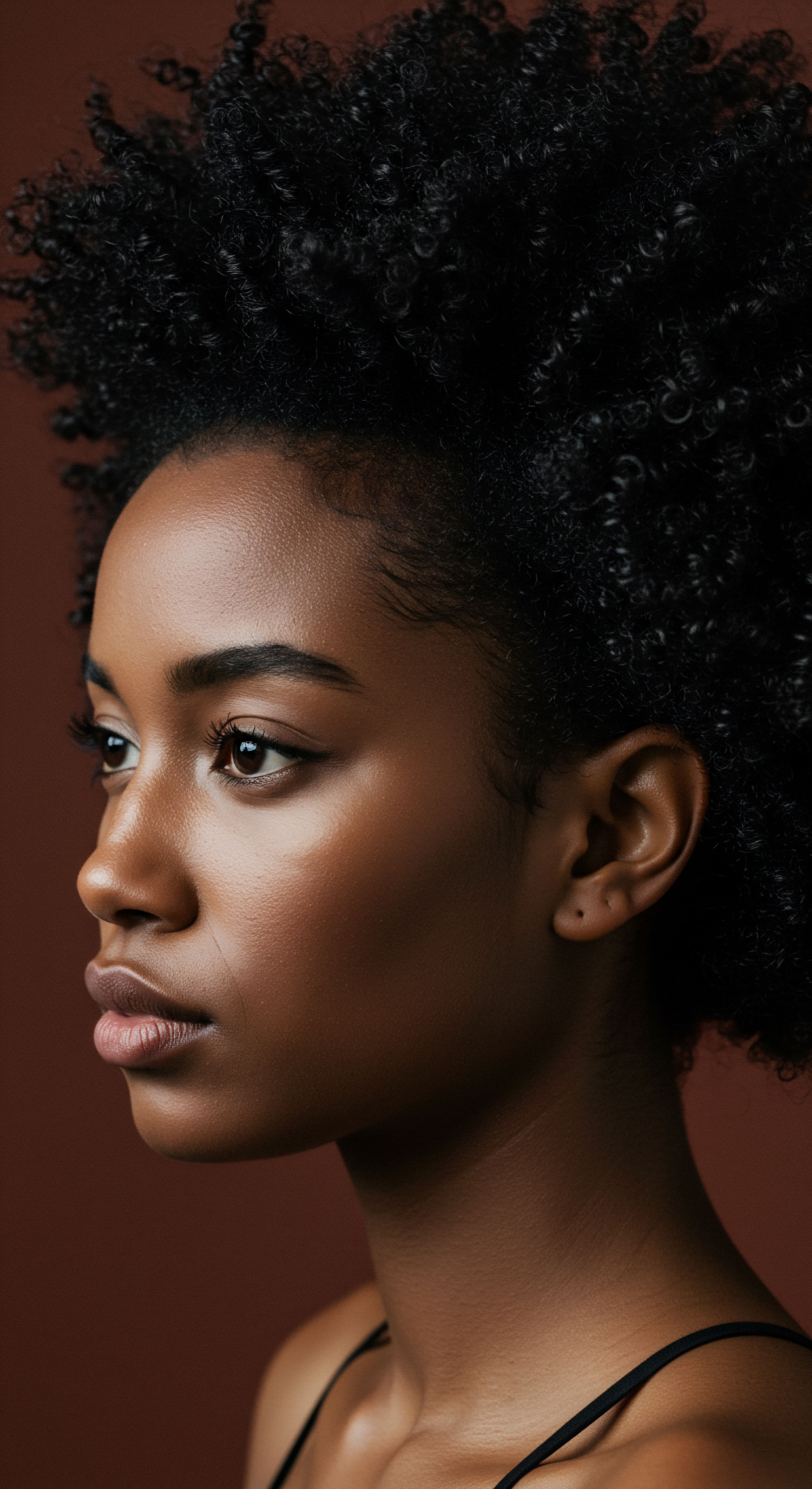
Reflection
As the sun dips below the horizon, painting the sky in hues of soft transition, so too does our hair enter a period of quiet transformation. The journey through the realms of hair anatomy, the wisdom of nightly rituals, and the intricate dance of systemic wellbeing reveals a truth both profound and deeply personal ❉ sleep is not merely an absence of waking, but an active, restorative force for textured hair. It invites us to consider our nighttime habits not as mundane chores, but as acts of profound care, honoring the unique resilience and delicate beauty of each strand. In this understanding, we find not just answers, but a gentle encouragement to nurture ourselves, from within to the very tips of our glorious coils and curls.

References
- Kim, J. Y. & Jeong, S. Y. (2018). The effect of silk pillowcases on hair breakage. Journal of Cosmetology and Dermatology, 17(3), 205-209.
- Fischer, T. W. Burmeister, G. Schmidt, N. Heyer, J. Elsner, P. & Paus, R. (2004). Melatonin increases anagen hair growth in women with androgenetic alopecia or diffuse alopecia ❉ results of a prospective, randomized, placebo-controlled study. British Journal of Dermatology, 150(2), 341-345.
- Sundelin, T. Lekander, M. Sorjonen, K. & Axelsson, J. (2013). Negative effects of sleep deprivation on the face and self-perception of attractiveness. Journal of Clinical Sleep Medicine, 9(11), 1157-1159.
- Schneider, M. R. & Paus, R. (2020). Hair Follicle Cycling ❉ A Primer on the Stem Cell-Driven Recurrence of a Mini-Organ. Cold Spring Harbor Perspectives in Medicine, 10(2), a035246.
- Cotsarelis, G. & Millar, S. E. (2001). Wnt signaling ❉ a key regulator of hair follicle development and cycling. Experimental Dermatology, 10(6), 405-412.
- Reardon, S. (2015). Sleep-deprived skin. Nature, 524(7563), S14-S15.
- Headington, J. T. (1984). Telogen effluvium. Archives of Dermatology, 120(5), 556-559.
- Tobin, D. J. (2006). Biochemistry of hair follicle pigmentation. Current Problems in Dermatology, 31, 23-35.
- Slominski, A. T. Zmijewski, M. A. Zbytek, B. Tobin, D. J. & Paus, R. (2007). Key role of the cutaneous neuroendocrine system in skin physiology and pathology. Journal of Investigative Dermatology, 127(7), 1630-1639.
- Saini, R. & Gupta, P. (2021). The impact of sleep deprivation on hair and skin. Journal of Dermatology and Cosmetology, 5(1), 1-5.